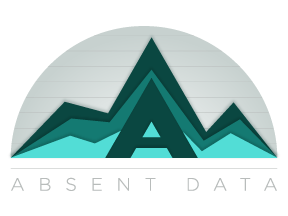How to Analyze Data | Step-by-Step Guide
The hardest part of data analysis is sometimes knowing how or what to analyze. This a make or break skill for any data analyst. However, it can be challenging to know where to start and how to ensure you’re making the right conclusions. In this blog post, we will guide you through the six steps of analyzing anything.

1. Set A Goal For Your Analysis
What is the Problem We are Trying to Solve?
The first step in analyzing anything is to formulate a hypothesis. T Your hypothesis should be specific, measurable, and relevant to the problem you’re trying to solve. To create a hypothesis, ask yourself what you’re trying to prove or disprove, and what data you need to collect. You must press your stakeholders to clearly define this.
Key Questions to Ask at this Stage:
- What assumptions or beliefs do you have about the problem you’re trying to solve?
- What data do you need to collect to test your hypothesis?
2. Define What a Successful Analysis Looks Like?
Define your criteria for success or failure
Before you begin your analysis, you need to define what success looks like. This means setting clear goals and objectives that you want to achieve from your analysis. For example, you may want to identify trends, uncover insights, or find opportunities for improvement. Defining success will help you stay focused and make sure you’re on track.
Key Question to Ask at this Stage
- What are your goals and objectives for this analysis?
- How will you measure whether or not your analysis was successful?
3. What Trends are Important?
Find Actionable Patterns
Once you have your hypothesis and goals in mind, the next step is to identify the trends that are most relevant to your analysis. This could involve looking at data, conducting surveys, or researching industry trends. It’s important to focus on trends that are both significant and actionable. Look for patterns, correlations, and outliers that could help you draw meaningful conclusions.
- What data sources are most relevant to your analysis?
- What patterns or correlations are most important for achieving your analysis goals?
4. What Events Are Important?
Identify trend drivers.
When analyzing trends, it’s crucial to consider the key variables and events that could influence them. By identifying and accounting for these factors, you can develop a more accurate analysis and plan of action. Outliers and events can greatly affect the trends. Also domain knowledge can inform us on market factors and seasonal affects on the data.
Key Questions to Ask at this Stage:
- What variables or events could influence the trends you’ve identified?
- How use this factors when developing your plan of action?
5. Who is the Audience for Your Analysis Results?
Tailor Your Communication
When communicating your analysis results, it’s important to consider your audience. Who will be reading or viewing your findings, and what do they need to know? Tailor your message to your audience, using language. charts, and examples that are relevant to them. If you’re presenting to stakeholders, focus on the business impact of your analysis. If you’re sharing with a technical team, dive deeper into the data and methodology.
Key Questions at this Stage
- Who will be reading or hearing your analysis results?
- What are their needs and expectations for the information you’re providing?
6. Repeat the Analysis Steps that are Needed
Finally, it’s essential to repeat these steps as needed. Analysis is an ongoing process, and new data and trends may emerge over time. Revisit your hypothesis and goals periodically to make sure they’re still relevant, and continue to analyze and act on new information.
Key Questions to Ask at this Stage
- What new data or trends have emerged since your last analysis?
- How can you revise your hypothesis, goals, or analysis approach to better address the problem you’re trying to solve?
In conclusion, analyzing anything requires a structured approach that includes hypothesis formulation, goal setting, trend identification, factor consideration, audience consideration, and ongoing analysis revision. With this framework, you can make informed decisions and drive meaningful change.
Watch the Video Presentation:
